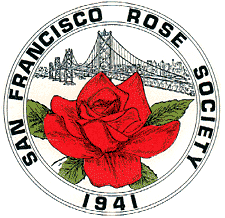 Rose Society's
Rose Society's
 Rose Society's
Rose Society's
 |
|
|
With the beginning of September we will see the beginning of a change in our weather. This means a change in our rose culture and how we view our rose garden. First we need to look at rose varieties which have not performed either by lack of bloom or poor disease resistance. If after a couple of years your rose cultivar has not met expectations, it is best to dig it up and either throw or give it away. All roses do not do well for all rose growers. Even some very good cultivars in the budding process will produce an occasional failure. If you have a rose spraying program, it is best to keep it going until the heavy rains arrive. November is a good time to let up on regular spraying. Of particular importance is the tedious task of keeping rose beds clean. Fallen rose foliage is the worst culprit for recurring rose problems. It is a harbor for both insect and fungus problems. Be sure to keep the garden clean! Clearly it is time to reduce the amount of feeding in the garden. Perhaps a light application of liquid fertilizer may be in order for some gardens, but the general rule is to stop feeding now. Most rose gardens in the temperate climate of the Bay area will bloom through November and during this time a rose grower can cut longer stems without harming the cultivar. It is sort of lie pre-pruning. Many rose bushes . . . even hybrid teas will produce roses in clusters and rather than disbudding to one bloom, why not let the entire cluster come out? I a city like San Francisco, with summer fog disappearing, the Fall Rose Season can be a real delight. Enjoy it! |

|  |  |  |  |  |  |   |
|
|
|
| ||||